Why I Couldn't Avoid This Iconic Place
The inescapable Itsukushima Shrine—one of the most iconic images of Japan, and why you need to break away from the tourist route.

On arrival in Tokyo's Narita airport, one of the first things you'll see are the huge posters of the the iconic image of Itsukushima Shrine plastered on the walls. The 55 foot tall Otorii gate is listed as one of the World Unesco Heritage Sites, is one of the most popular tourist stops in Hiroshima, Japan's eleventh largest city. This is one of the most photographed landmarks in the country, with millions of visitors, both domestic and international coming to walk among the dozens of buildings, that make up the traditional Japanese Shinto Temple.

The Itsukushima shrine, located around 200M from the island of Miyajima, is believed to be the boundary between the spirit and the human worlds. The shrine was everywhere, on leaflets, postcards, bento-box wrappers, on posters on the trains and on billboards. The first Otorii of Itsukushima was built in 1,168, but the one that stands there now was the eighth to be constructed, towards the end of the 19th century.
When we decided that we were going to Japan, we couldn't not go to see the Itsukushima Shrine, just like the millions of other travellers who come to see this view.

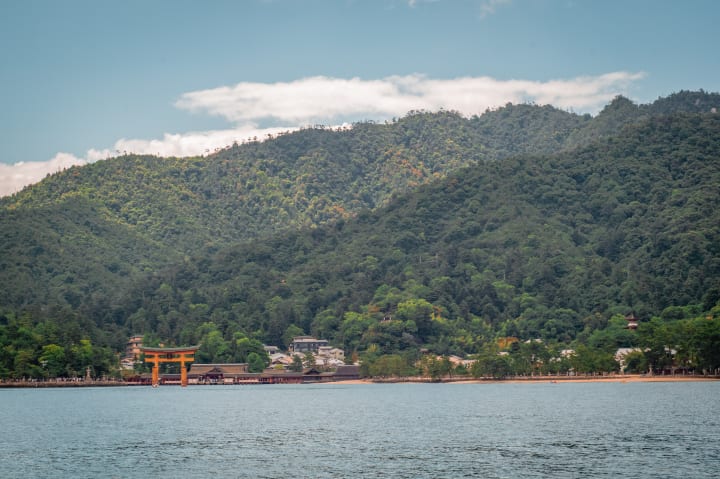
The first glimpse of Itsukushima Shrine
It was an early Sunday morning in June, and the sticky city heat of Hiroshima drove the weekend visitors to the Island of Miyajima. Jet lag had woken us at around 5AM, so after breakfast we hopped on the train from Hiroshima station, and rode an hour or so to the coast, thankful for air conditioned carriages. Disembarking, we made the short walk to the boat, boarded with our train passes, and joined hundreds of other passengers that would ferry us on the short crossing from the mainland to the Island of Miyajima.

We knew that visitors often come to take photos and visit the Shrine, but what we didn't realise is that the Hiroshima University's Department of Economics is based on the island. And many people still call the island home.
The deer of Miyajima, also call this home. Almost as famous as the Shrine itself, the animals are incredibly tame, they let people pet them and children chase after them. However they do often claim 'pest' status, as the creatures nose their way into bags and steal food.
We noticed that visitors occasionally brought their dogs to the island, but because of the deer, weren't allowed to be put on the floor. Supposedly the deer were known to attack the pets, or the other way around. To avoid this, canines were plopped into children's prams and wheeled around, or squashed into chest harnesses that were meant to be for parents to carry their young children.


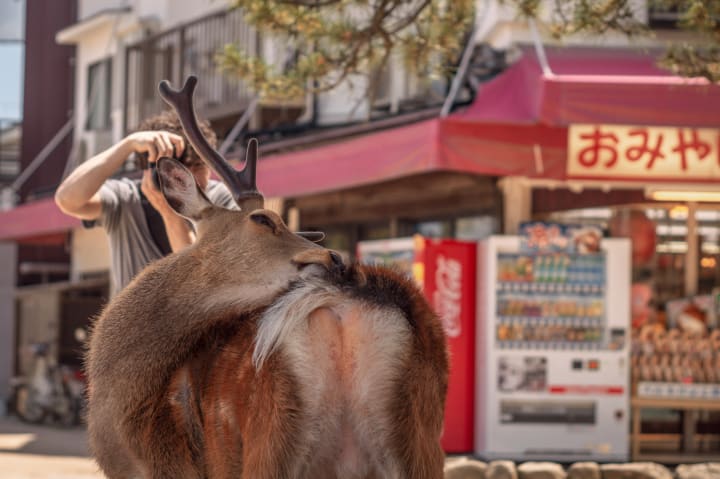
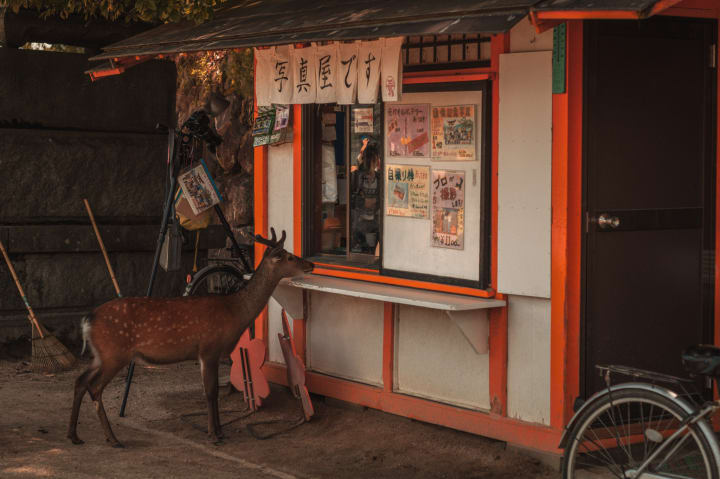
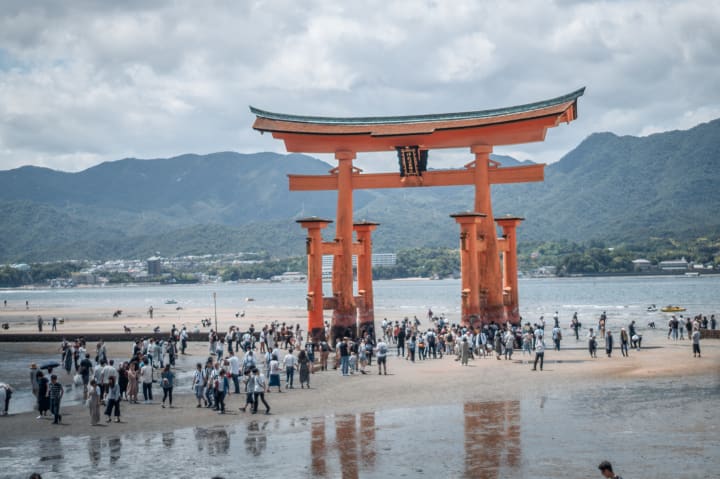
The Itsukushima Shrine at low tide
At low tide, you will see visitors walking out along the sand to the foot of the gates, and stand in awe of the massive main pillars, which are nine meters in circumference. Not buried very deep into the seabed, the Otorii is held upright by its own weight, safe from typhoons and earthquakes.


Hitasaki Lantern
We watched swarms of people as they queued to take a family photo out along the jetty, just in front of the Hitasaki Lantern. We didn't wait in line, we just stood to one side and watched as women adjusted their hair and fathers pinned the arms of their children to their sides to make sure they were in focus for the family portrait.

We watched workmen in white wellies pruning trees, throwing felled branches into the back of their tiny pick up trucks. The deer took a particular liking to these men, and would sit in the shade next to the trucks and wait to be petted by them.
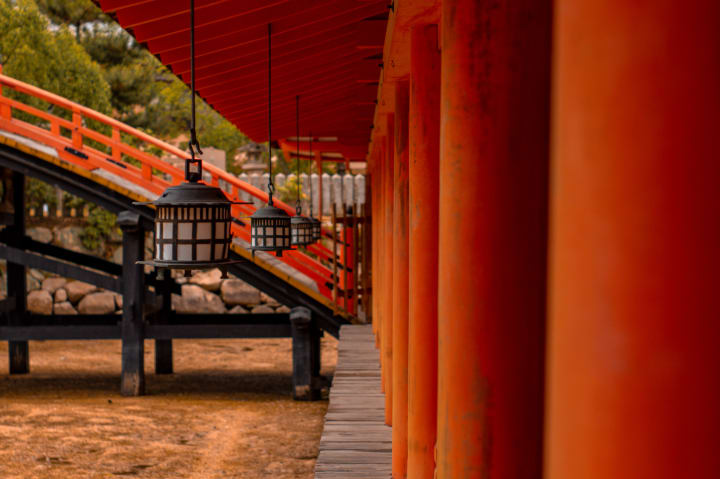
The steepest bridge
We walked through the temples, prayed at various shrines, bathed our heads in incense smoke, and washed our hands in the sacred water. The vermillion colour of the shrine and the temples is considered to keep evil spirits away, but also protects the wood below from erosion.
It was forecast rain, so we brought an umbrella. For the first few hours our preparedness had been unnecessary, as the summer sun kept the rain away. But as we sat on the stone benches on the opposite side of the bay, to drink the peach flavoured ice tea we'd bought from one of the thousands of vending machines we'd passed that morning, we saw the rain. The mainland had grown darker, and a visible patch of grey rain started to move towards the island.

I predicted it would be with us in around 10 minutes, and like clockwork, ten minutes later, we watched people running for the safety of the temple roofs. We stayed on our bench, popped open the umbrella and laughed at the smiling women taking photos in the rain.

Coffee House, Miyajima
Whilst in Western Europe, where we have lived for most of our lives, coffee is by far the most consumed beverage. Out here in the East, tea is still king.
Consequently, Tea Houses are commonplace, but coffee shops which serve a decent cup are rare. As two caffeine starved Europeans, we jumped with joy on sighting of a tiny sign saying 'coffee'. We ducked through the doorway, away from the crowds of people, and we were transported to another world.

Japanese Coffee House and Garden
It was silent inside. The interior was classically Japanese, tatami mats at the back, with low tables and cushions on the floor. Through the half-open screens, we could see the perfectly kept garden, shrubs and lawn shorn and mowed, and a thousand different hues of green. The proprietor, a middle-aged lady, greeted us and invited us to sit. We sat, had a look at the menu, and ordered two cups of black coffee.
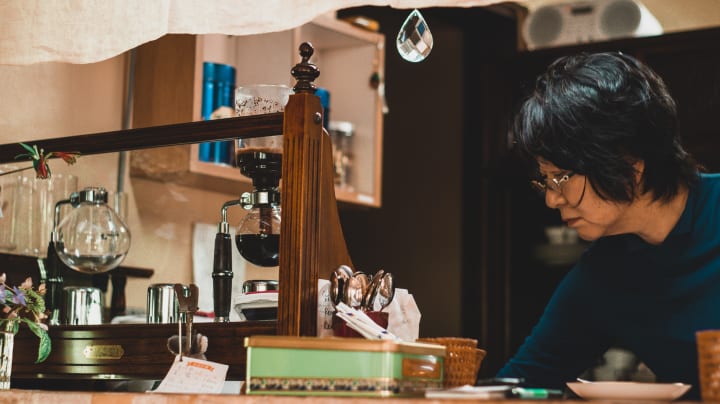
The Alchemist
She must have been an alchemist, weighing out the perfect amount of coffee, boiling the water and placing it in the bottom of a glass sphere, suspended in mid air by a metal rod. Clear bubbles rose and the water evaporated into the chamber above, filled with the coffee grinds. And then just like magic, coffee dripped, drop by drop, into the spherical jug below.
She brought us china teacups, filled with the freshly extracted coffee, and tucked below on the saucer were small, sweet crackers, shaped like maple leaves, a symbol of the region. We nibbled on the treats, swapping halfway through, so that we could try both.
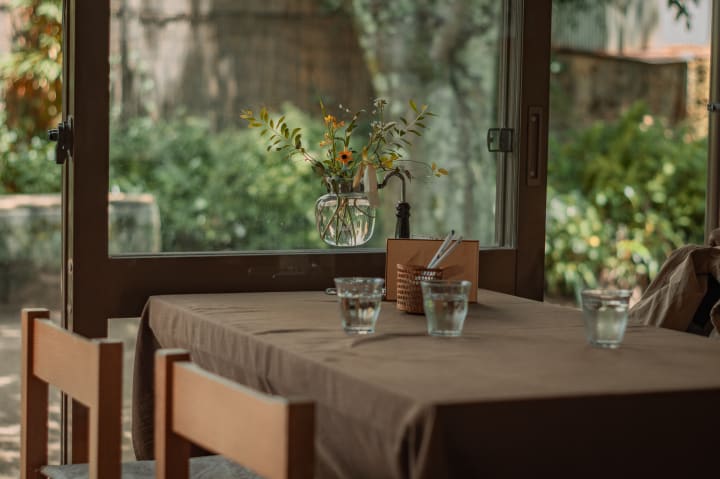
Water left for returning adventurers
Looking to our left, a group of women, who I suspect were two sisters in their 50s and one of their adult daughters, had gone to look at the garden, and smoke sitting on the fallen tree trunk just outside the window.
My travelling companion and boyfriend is half Japanese, and even though he grew up in the UK, can understand a lot of what is being said. Our hostess ran over to them, and spoke softly in Japanese. We deducted that she had told the women to leave their bags, and venture through the garden to a stepped path, which promised an unusual view.
We finished our coffee, drank some water and abandoned our bags, to follow the women up the path. Dodging the wasps nest and lots of other creepy crawlies on the way up the steep and overgrown path, around 30 meters up, we found a clearing through the maple trees.

We first saw the roofs of houses and restaurants, with clothes drying on washing lines and steam billowing out from the kitchens. We pressed into the corner of the clearing, looked left, and then we saw it, a view of the iconic Itsukushima Shrine, from a perspective that I've never seen before. From the thousands of photos that circulate social media daily, to travel guides, to posters that plaster the walls of Narita Airport in Tokyo, I'd never seen this shot.

From a few hundred meters away, above the crowds with selfie sticks and dogs in prams, it was quiet. The people looked like ants, the vermillion gates towering above them. We were alone, a very, very unusual experience in a country as densely populated as Japan.
There's no denying that these places are beautiful and full of history, and these iconic landmarks, steeped in history and culture, are what draw people from thousands of miles away. Millions of photos must have been taken that day (we took a few hundred ourselves) and thousands of these images would have been uploaded to social media, telling the world "I've been here too!"

The gripes that I usually have about visiting heavily touristy places melted away—we didn't have to fight other tourists for a photo, we didn't queue for a view. We had found a quiet corner, with a view of the Itsukushima Shrine that I'd never seen scrolling through my Instagram feed or in the latest Lonely Planet guide.

We stayed a while, snapping photos, enjoying the differently coloured roofs, spotting the tall temples, looking at how the mountains on the mainland seem to fade into the distance. The sun peeked in and out of the clouds, and we decided to descend before we got too hungry, or were attacked by wasps.
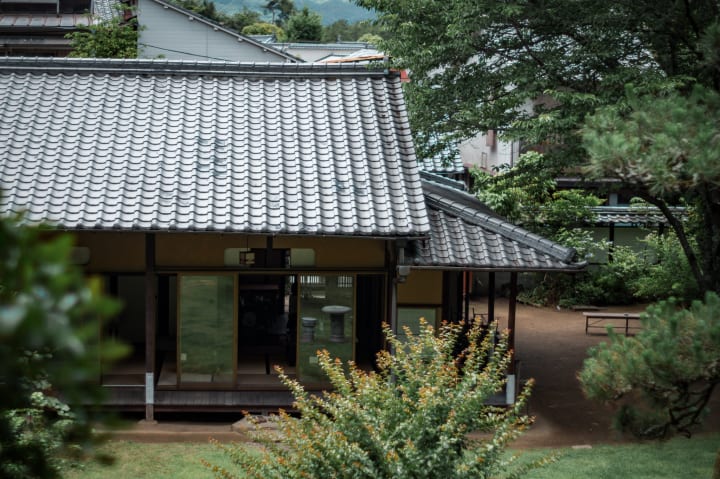
The coffee house from the stepped trail
Just as it was left for the women before us, two glasses of cold water had been placed on our table. We drank, thirstily, thanked our hostess and exited into the busy street.

Hiroshima Traffic
We hopped on to the ferry, jumped back on the train headed for the city. It had been hot, and after a long day in the sun, we were thankful again for air conditioning.
If you find yourself in Miyajima one day, be sure to go for a cup of coffee, you never know what you'll find.
About the Creator
Grumble Bee
Grown in the British Isles, exploring beyond.
Photographer // Journalist // Linguist // Environmentalist






Comments
There are no comments for this story
Be the first to respond and start the conversation.